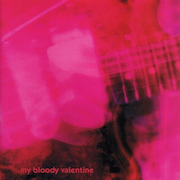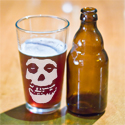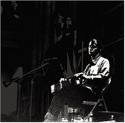|
Have never used US-05 before, but for this last batch I just dropped in a packet of the stuff rather than putting together a starter of 1056 since I was feeling lazy. After kegging it I discovered it is a total ester fest and it is nearly undrinkable. Could that come from underpitching or do I need to take another look at temperature? I didn't think it got hotter than 72 or so but maybe not.
|
|
|
|

|
| # ? Apr 28, 2024 15:34 |
|
Even 72* is pretty high for US-05. I ferment mine at just above 60. Also keep in mind that if the ambient temp is 72*, the beer itself at the height of fermentation could be around 75*
|
|
|
|
kitten smoothie posted:Have never used US-05 before, but for this last batch I just dropped in a packet of the stuff rather than putting together a starter of 1056 since I was feeling lazy. Was it hotter than 72 in the room, or inside the bucket? Remember that fermentation creates heat, so the beer will be a few degrees higher inside the bucket than the ambient temperatures.
|
|
|
|
RiggenBlaque posted:Even 72* is pretty high for US-05. I ferment mine at just above 60. Also keep in mind that if the ambient temp is 72*, the beer itself at the height of fermentation could be around 75* My last batch using US-05 (pumpkin ale) cleared 1.050 to 1.008 in three days at 60-65 degrees. It is a beast of a yeast, I'd hate to let a temp strip on the fermenter get above 68 during the first few days.
|
|
|
|
Josh Wow posted:This is a strange attitude to have, it's not more impressive to hit your numbers on a big beer unless it's some ungodly huge thing. Things don't get wildly different just because you double your grain bill. I must admit I'm not entirely sure I understand what you find strange; all I was trying to say was that when I'm making a relatively smaller beer, my system's efficiency is almost always the same number, but it variably goes down the larger the grain bill is which means I end up having to kind of guess how much base malt to shoot for. I'm not really sure why that happens - I just seem to undershoot my starting gravity target by several points when it gets over a certain size. Jo3sh posted:Time for holiday wishlists! Angry Grimace fucked around with this message at 17:57 on Dec 10, 2012 |
|
|
|
fullroundaction posted:Why is everyone sold out of Moscato concentrate now that I want it You could find a cheap Moscato wine kit and just use part of that.
|
|
|
|
A poster in another thread once told me that efficiency is likely to go down the higher the gravity of the beer, that isn't true?
|
|
|
|
Midorka posted:A poster in another thread once told me that efficiency is likely to go down the higher the gravity of the beer, that isn't true? If you sparge less to get a lower kettle volume, you extract fewer sugars. You can use more sparge water, but unless you do an extra-long boil to compensate, you'll have more beer at a lower gravity than expected.
|
|
|
|
crazyfish posted:If you sparge less to get a lower kettle volume, you extract fewer sugars. You can use more sparge water, but unless you do an extra-long boil to compensate, you'll have more beer at a lower gravity than expected. Thanks, so because bigger beers typically use much less sparge water, because strike water is so much of the volume, that means you're pulling less through on the sparge. Got it. I also read on another forum that after completely sparging that your run-off should be somewhere around 1.020-1.030, thoughts?
|
|
|
|
You guys are a bunch of wusses. I ferment 05 in the low 70s all the time and everything always turns out fine. Certainly not "estery to the point where I can't drink the beer". crazyfish posted:You could find a cheap Moscato wine kit and just use part of that. Unfortunately the kits are like 3-4 times the price of just the concentrate. I guess I'll just wait since my not-so-local homebrew shop is out too.
|
|
|
|
Midorka posted:Thanks, so because bigger beers typically use much less sparge water, because strike water is so much of the volume, that means you're pulling less through on the sparge. Got it. For me, the limiting factor is the size of my boiler. So yes, because there is so much strike water, I don't get to sparge as much, and my extract efficiency goes way down on big beers. As to complete sparging, 20 to 30 is still pretty rich. I think I had heard to sparge until 1.010. Fake edit: Just looked it up: stop at 1.008, or when pH goes above about 6.2, whichever comes first.
|
|
|
|
fullroundaction posted:You guys are a bunch of wusses. I ferment 05 in the low 70s all the time and everything always turns out fine. Certainly not "estery to the point where I can't drink the beer". To be honest, I've had beers turn out just fine where all I did was pitch US-05 and let them sit in a hot closet. That said, my typical procedure is not this cavalier and I make more effort to keep them in the mid 60s.
|
|
|
|
I always get efficiency in the 80s but I use more water than needed and always boil hard for 90 minutes, so in the end the few bucks I save in grain may be overshadowed by the extra money spent on propane, I'm not really sure.
|
|
|
|
I got to finally help an all-grain brewer make a batch on Friday night, which gave me a lot more insight into transitioning from extract. This dude was batch sparging and had his process down to a tee, where I had only really read about fly sparging up until that point. So, are there any options for batch sparging that make batches larger than 5 gallons if I ever want to make a beer bigger than 1.075 OG? All the converted Igloo cooler > mash tun options I'm seeing online are 5 or 10 gallons coolers, which can't handle anything bigger than 1.075/5 gallons. If I'm hoping to go to 10 gallon batches when I make the switch to AG am I pretty much pigeon-holing myself into a fly sparge system?
|
|
|
|
hellfaucet posted:I got to finally help an all-grain brewer make a batch on Friday night, which gave me a lot more insight into transitioning from extract. This dude was batch sparging and had his process down to a tee, where I had only really read about fly sparging up until that point. You don't have to get a round one, you can use any insulated cooler that has a port to insert a valve. Many people use 70 gallon coolers from Wal-Mart quite successfully to make huge batches. I'm not quite sure what you mean by the difference in fly/batch sparging here - its true that batch sparging has a greater quantity of water in the cooler at once, but there isn't anything preventing you from simply splitting up the sparge water into smaller batches.
|
|
|
|
Jumping on the "you did something wrong with US-05" bandwagon. Never, ever, had a problem with it. Also: Josh Wow posted:One of the reasons I homebrew is because you can't really get a lot of session beers, so I rarely make anything over 6%. I can get tons of 8%+ beers at the store but a beer under 5% that isn't crap is hard to find. Plus judging from the low alcohol beers I've had from other homebrewers it's a lot harder to make a 4% beer taste good compared to a 6% beer. This is pretty much true across the board. I couldn't put my finger on why I was brewing small, low ibu, beers. It's the same thing between getting a steak with caramelized onions, mushrooms, cheese, and dry rubbed in jerk (which isn't bad) or a steak with a pinch of sea salt and fresh ground pepper. You can pretty much put anything behind an oozing mountain of flavor. e: Yeah Mr.Faucet - you are mixing up your terms. Fly and batch sparging and two different methods of sparging. Jacobey000 fucked around with this message at 19:49 on Dec 10, 2012 |
|
|
|
hellfaucet posted:I got to finally help an all-grain brewer make a batch on Friday night, which gave me a lot more insight into transitioning from extract. This dude was batch sparging and had his process down to a tee, where I had only really read about fly sparging up until that point. You can brew much higher ABV than you think with a 10 gallon mash tun for 5 gallon batches.
|
|
|
|
A friend and I started our first batch on Saturday. WE're using the Brewers Best American Cream Ale kit, and I'm concerned about temperature. We're currently storing it in the coldest room of his house, and it's a bit cooler than is specified. The recipe calls for 68-72 degrees, and it's currently closer to 60 than 70. We've wrapped it in a blanket, and we're hoping that the temperature will rise as the yeast become more active. I had thought that a slightly lower temperature would just result in a slightly longer fermentation cycle and wasn't overly concerned. I've since read a few things that suggest otherwise, specifically that I might get some pretty funky flavors as a result of putting the yeast under stress. How concerned should I be?
|
|
|
|
Midorka posted:You can brew much higher ABV than you think with a 10 gallon mash tun for 5 gallon batches. OK yeah maybe I'm confused. Really, all I care about is being able to make 10 gallon batches of big beers in an insulated cooler, instead of maintaining a temp via a burner in a metal kettle converted into a mash tun. That seems like the most pro way to go, but also is hundreds and hundreds of dollars more expensive in terms of equipment.
|
|
|
|
Jacobey000 posted:e: Yeah Mr.Faucet - you are mixing up your terms. Fly and batch sparging and two different methods of sparging. I'm a little unclear on it, but my guess is that he's referring to the fact that when you batch sparge, if you do a single batch sparge, you can practically fill the MLT with sparge water even on a 5 gallon batch, which would make it seem like you were limited on size in the tun. My experience is that 5 gallon batches of even moderately high gravity don't work so well in 5 gallon tuns and I think that would be consistent for 10 gallon batches in 10 gallon tuns. A better option is to buy a rectangular cooler at Wal-Mart that's 50, 60 or even 70 qts if you want to do 10 gallon batches. In fact, many people prefer rectangular tuns for batch sparging because its much easier to stir up the grain and locate/eliminate dough balls due to the shallower depth. hellfaucet posted:OK yeah maybe I'm confused. Really, all I care about is being able to make 10 gallon batches of big beers in an insulated cooler, instead of maintaining a temp via a burner in a metal mash tun. That seems like the most pro way to go, but also is hundreds and hundreds of dollars more expensive in terms of equipment. As for big beers in 10G size, get a cooler conversion kit on Northern Brewer or MoreBeer, etc. and then buy your own cooler. It doesn't have to be round, it can be rectangular so long as it has a port for you to install the valve. For example, one like this would probably work for your purposes: http://www.walmart.com/ip/Igloo-Marine-54-Quart-Cooler/4994241 and there are lots of options in the 70 qt. range as well. Be aware that getting a larger MLT means you will find it harder to hold temperatures with smaller batches due to a large amount of "dead space" in the tun. mbottoms posted:A friend and I started our first batch on Saturday. WE're using the Brewers Best American Cream Ale kit, and I'm concerned about temperature. We're currently storing it in the coldest room of his house, and it's a bit cooler than is specified. The recipe calls for 68-72 degrees, and it's currently closer to 60 than 70. We've wrapped it in a blanket, and we're hoping that the temperature will rise as the yeast become more active. I had thought that a slightly lower temperature would just result in a slightly longer fermentation cycle and wasn't overly concerned. I've since read a few things that suggest otherwise, specifically that I might get some pretty funky flavors as a result of putting the yeast under stress. Do you know what yeast you pitched? Angry Grimace fucked around with this message at 20:30 on Dec 10, 2012 |
|
|
|
Regarding 10 gallon high gravity batches, I have a 13 gallon rectangular cooler and even for high gravity 5 gallon batches it's never been much more than half full. Other things to keep in mind - high gravity batches typically incorporate some amount of simple sugars (candi syrup, honey, etc) to keep the FG from going too high. Also, if mash tun space ever becomes a limiting factor you can always throw a pound or two of DME into the boil to supplement your OG, and you might even get more out of your hops that way.
|
|
|
|
How accurate are thermometer strips that you can put on the sides of buckets? I'm always unsure about what temp I'm fermenting at.
|
|
|
|
Angry Grimace posted:
Not off the top of my head. I've tried to find a more detailed ingredient list, but even the manufacturer's website doesn't specify. Lag*something... IIRC. light ale yeast. edit: it's worth mentioning that I started it in a bowl of warm sugar water before I pitched, and there was light bubbling within 6 or 8 hours. There's a good inch of foam on top and fairly constant bubbling from the lock. mbottoms fucked around with this message at 20:48 on Dec 10, 2012 |
|
|
|
hellfaucet posted:OK yeah maybe I'm confused. Really, all I care about is being able to make 10 gallon batches of big beers in an insulated cooler, instead of maintaining a temp via a burner in a metal kettle converted into a mash tun. That seems like the most pro way to go, but also is hundreds and hundreds of dollars more expensive in terms of equipment. Actually, I mash in a converted beer keg, and I don't find it necessary to add heat to maintain temp. I do wrap a blanket around it once I have doughed in, but that's the extent of my effort in that regard.
|
|
|
|
Jo3sh posted:Actually, I mash in a converted beer keg, and I don't find it necessary to add heat to maintain temp. I do wrap a blanket around it once I have doughed in, but that's the extent of my effort in that regard. Do you use a pump to recirculate your wort or is that unneeded? Is this pretty much what you're using?
|
|
|
|
hellfaucet posted:Do you use a pump to recirculate your wort or is that unneeded? Is this pretty much what you're using? Yup, that's very close to what I use as a mashtun. I use a Bazooka screen rather than a false bottom. I don't recirc while the rests are going on, I just leave it alone. For vorlauf, yes, I use a pump, but you could just as easily just drain to a pitcher or whatever by gravity and then pour back in the top.
|
|
|
|
I've had a few beers turn out a little strange with US-05 (otherwise my favorite generic little beasty). Every time it's cleared up after a month or two. It's never been an issue in light/hoppy/'fruity' beers, though.
|
|
|
|
In the 10-gal igloo I have trouble doing full 10-gal high gravity batches without another tun. In the converted keg it's no problem. I've found it helps to pre-heat with boiling water (a gallon or two, just swish it around long enough to warm everything up) and to have a good blanket and lid. Are most square/rectangle coolers made of heat / food safe plastic? The big gatorade style Igloos are often marketed for hot beverages too but I never see that for traditional coolers. I poured boiling water into one of my Igloos and it warped quite a bit. Now it's my brother's mash tun.
|
|
|
|
porkface posted:In the 10-gal igloo I have trouble doing full 10-gal high gravity batches without another tun. Coolers interior are pratically all made of HDPE food grade plastic - they are designed for storing food.
|
|
|
|
mbottoms posted:A friend and I started our first batch on Saturday. WE're using the Brewers Best American Cream Ale kit, and I'm concerned about temperature. We're currently storing it in the coldest room of his house, and it's a bit cooler than is specified. The recipe calls for 68-72 degrees, and it's currently closer to 60 than 70. We've wrapped it in a blanket, and we're hoping that the temperature will rise as the yeast become more active. I had thought that a slightly lower temperature would just result in a slightly longer fermentation cycle and wasn't overly concerned. I've since read a few things that suggest otherwise, specifically that I might get some pretty funky flavors as a result of putting the yeast under stress. I did the Brewer's Best Cream Ale Kit with WLP080 instead of the packet and it turned out great with a 3 week fermentation with temps ranging from 68 to 72. My only complaint would be that the flocculation was pretty low, and even after several weeks of bottle conditioning I still have bits of yeast clinging to the side of the bottle and on the bottom just waiting to be disturbed. I wouldn't worry too much about the temperature. I have a Saison (Northern Brewer's Saison de Noel recipe with WLP680 Farmhouse Ale yeast) that's been fermenting for three weeks, and I accidentally left it fermenting at around 50F for three days when we were gone for Thanksgiving. I have no idea how it will turn out but we'll find out soon enough.
|
|
|
|
Cointelprofessional posted:How accurate are thermometer strips that you can put on the sides of buckets? I'm always unsure about what temp I'm fermenting at. I've taken temp readings of the beer in the fermenter with my digital thermometer so I can compare to the strip, they are actually pretty accurate. My strips usually show up as a range spanning three different temps, I've found my thermometer to align most closely with the one in the middle.
|
|
|
|
mbottoms posted:A friend and I started our first batch on Saturday. WE're using the Brewers Best American Cream Ale kit, and I'm concerned about temperature. We're currently storing it in the coldest room of his house, and it's a bit cooler than is specified. The recipe calls for 68-72 degrees, and it's currently closer to 60 than 70. We've wrapped it in a blanket, and we're hoping that the temperature will rise as the yeast become more active. I had thought that a slightly lower temperature would just result in a slightly longer fermentation cycle and wasn't overly concerned. I've since read a few things that suggest otherwise, specifically that I might get some pretty funky flavors as a result of putting the yeast under stress. What yeast? For that style, cooler is probably going to be better but some yeast don't like super cool temps.
|
|
|
|
Kegging update: still the best goddamn thing. If you're not already kegging you should be saving up your pennies and get in on this ASAP. Also my $20 temp controller is working perfectly and I would recommend it to anyone with even the vaguest idea of how to wire a thing.
|
|
|
|
Galler posted:Kegging update: still the best goddamn thing. If you're not already kegging you should be saving up your pennies and get in on this ASAP. This makes me really wish I had the space to keg.
|
|
|
|
Just ordered a few caps for some upcoming brews we're bottling. I have way too much fun designing these. We're having a GoT premier party, deal with it nerds.
|
|
|
|
crazyfish posted:This makes me really wish I had the space to keg. Bottling is second on my list of things that suck about homebrewing, right behind brew-day cleanup.
|
|
|
|
I could be alone in saying this, but kegging really doesn't take that much less time than bottling does. First you have to clean out the keg with oxyclean, then flush the lines with oxyclean, then clean out the keg with hot water, then flush the lines with hot water, then sanitize the keg, then sanitize the lines, then fill the keg with co2, then fill the keg, purge the keg of oxygen, then finally throw in the fridge. I don't know, it's less effort overall, but not by a whole lot. I'm probably alone in saying that kegging is definitely less work overall, but not by as much as people make it out to be. It's also expensive as poo poo. Not to mention you then have to dial in your system so that every time you pour a beer its not 3/4ths foam.
|
|
|
|
I'm not gonna lie, I do all that stuff when I acquire a new keg, but once it's cleaned I gas it to seal it, and then only hit it with some star-san when I fill it. If I kick a keg and I have something to refill it with, I'll also just kinda shake some hot water in the keg, star-san it, then rack in the beer. Generally when my pipleine is where I like it, I have a keg carbed and ready when one kicks, so I just swap it out and suffer the first glass being a blend...
|
|
|
|
RiggenBlaque posted:I could be alone in saying this, but kegging really doesn't take that much less time than bottling does. First you have to clean out the keg with oxyclean, then flush the lines with oxyclean, then clean out the keg with hot water, then flush the lines with hot water, then sanitize the keg, then sanitize the lines, then fill the keg with co2, then fill the keg, purge the keg of oxygen, then finally throw in the fridge. I don't know man, you can get the whole thing going for reasonably if you know what you're looking for, i.e. dude with the $20 temperature controller above.
|
|
|
|

|
| # ? Apr 28, 2024 15:34 |
|
RiggenBlaque posted:I don't know, it's less effort overall, but not by a whole lot. I'm probably alone in saying that kegging is definitely less work overall, but not by as much as people make it out to be. It's also expensive as poo poo. I don't know, man, it used to take me a couple-three hours, working with a friend, to bottle ten gallons of beer. Now, I keg ten gallons, working alone, in less than an hour - and most of that is having a glass while the siphon runs. Sure, I do a little work here and there to put kegs to soak or dump and rinse or whatever, but I also don't have to soak labels off, check through cases of bottles to see if there is any mold, etc. I guess what I am saying is that the actual packaging is way less, but I'll grant the peripheral work might be roughly equivalent. And yes, it's expensive to get started, but once you are up and running, it's pretty darn cheap. I think my only real consumable related to kegging is CO2 (although I hear that is way up lately). Jo3sh fucked around with this message at 07:00 on Dec 11, 2012 |
|
|






















